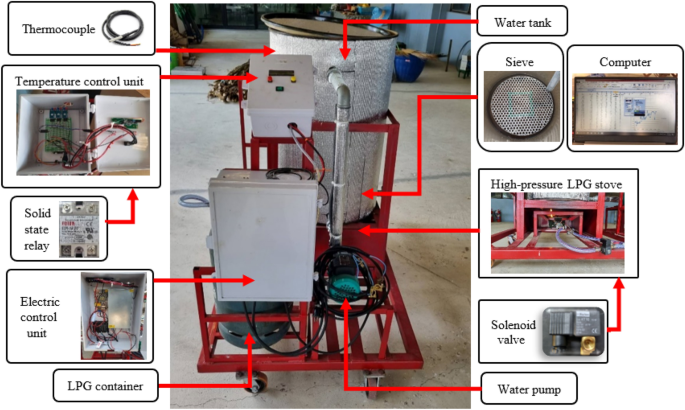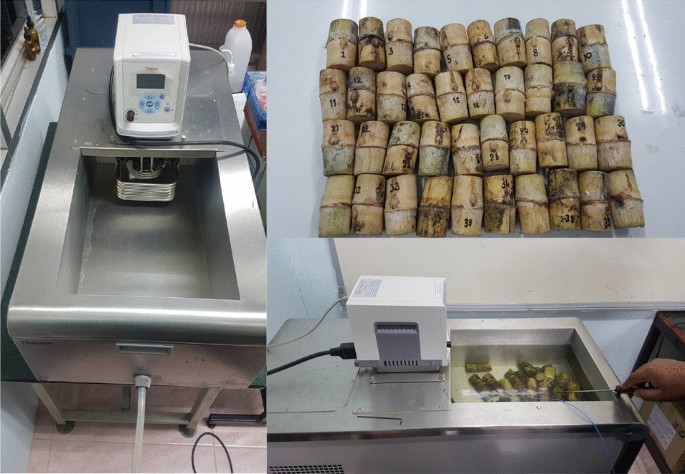Understanding the Economic Impact of Products From Sugarcane
Understanding the Economic Impact of Products From Sugarcane
Blog Article
Discover the Innovative Advantages of Products From Sugarcane for Sustainable Living
Sugarcane has actually arised as an essential resource in the mission for sustainable living. Its diverse applications cover biodegradable packaging, sustainable energy, and much healthier food choices. As sectors look for green choices, sugarcane's convenience supplies appealing solutions. However, real potential of sugarcane extends beyond its current usages. Discovering its ingenious benefits can disclose new paths toward a more lasting future. What various other possibilities might this remarkable plant hold?

The Increase of Sugarcane as a Lasting Source
As global understanding of environmental concerns expands, sugarcane has become a popular lasting source. This flexible plant offers a variety of advantages that add to environment-friendly techniques. Sugarcane is a renewable energy, efficient in thriving in varied climates while taking in co2, thus reducing greenhouse gas exhausts. Its fast development cycle enables regular harvesting, causing a continual supply of raw material.Additionally, sugarcane cultivation typically requires less water contrasted to various other plants, making it an effective option in water-scarce regions. The byproducts of sugarcane, such as bagasse and molasses, can be repurposed for various applications, lowering waste and promoting circular economic climate principles. Furthermore, innovations in agricultural methods have actually caused more sustainable farming techniques, further improving sugarcane's ecological profile. As consumers increasingly seek lasting options, sugarcane stands apart as a feasible choice for those committed to minimizing their environmental footprint.
Naturally Degradable Product Packaging Solutions
Exactly how can naturally degradable packaging remedies transform the way consumers approach sustainability? By making use of sugarcane-based materials, these ingenious options use an engaging choice to conventional plastics. Naturally degradable packaging made from sugarcane breaks down normally, noticeably decreasing landfill waste and greenhouse gas emissions. As customers become increasingly knowledgeable about their environmental impact, the need for lasting packaging continues to rise.These sugarcane-derived items not just offer functional objectives yet additionally line up with eco-conscious customer values. They provide a substantial means for services and people to add to a circular economy, promoting resource performance and minimizing environmental footprints. Furthermore, as sectors embrace biodegradable alternatives, they foster a society of sustainability that resonates with an expanding market seeking responsible choices.In significance, eco-friendly packaging remedies from sugarcane represent a crucial action onward in sustainable methods, encouraging consumers to make environmentally friendly choices without giving up convenience or high quality.
Renewable Energy Generation From Sugarcane
A significant part of renewable power generation can be stemmed from sugarcane, showcasing its versatility beyond typical agricultural usages. Sugarcane biomass, including bagasse and leaves, is a powerful source for bioenergy production. This biomass can be converted into biofuels such as ethanol, which functions as a cleaner alternative to nonrenewable fuel sources. Additionally, the combustion of sugarcane results generates heavy steam and electrical power, giving a power source for sugar mills and close-by communities.The cultivation of sugarcane also adds to carbon sequestration, as the plants soak up carbon dioxide throughout their development cycle. By using sugarcane for power, waste is reduced, and sustainable methods are encouraged. This eco-friendly energy technique not just sustains energy requirements however likewise advertises rural development, creating jobs in bioenergy sectors. Overall, sugarcane attracts attention as a key gamer in the shift to sustainable energy services, lining up with global initiatives to minimize carbon impacts.

Eco-Friendly Textiles and Fabrics
Green textiles and fabrics stemmed from sugarcane present an encouraging choice to standard products. These biodegradable options not just decrease ecological effect but also use longevity and performance equivalent to conventional materials. Lasting production procedures further boost their allure, making them an integral component of a lasting way of living.
Biodegradable Textile Alternatives
Why is the modification towards eco-friendly textile options necessary for sustainable living? The increasing understanding of ecological deterioration has actually triggered a search for alternatives to conventional textiles, which often contribute to contamination and waste. Biodegradable materials, derived from renewable energies such as sugarcane, supply an appealing remedy. These materials break down normally, lowering land fill build-up and lessening ecological influence. In addition, they can help lower carbon footprints and dependence on fossil gas. As consumers become a lot more eco-conscious, the demand for sustainable fabrics grows, motivating manufacturers to invest and innovate in eco-friendly alternatives. This adjustment not only sustains lasting techniques yet also fosters a round economic climate, paving the means for an extra liable approach to style and fabric production.
Resilience and Performance
When reviewing environmentally friendly textiles and materials, longevity and efficiency are critical elements. Sugarcane-derived materials demonstrate outstanding toughness and strength, making them appropriate for various applications. These fabrics commonly exhibit superior moisture-wicking residential or commercial properties, which enhance comfort in daily wear. In addition, their natural fibers contribute to breathability, guaranteeing that garments remain wearable and fresh also sought after conditions. The efficiency of sugarcane-based fabrics encompasses their resistance to tear and use, permitting items to preserve their integrity with time. Furthermore, these environmentally friendly fabrics can be treated to boost UV protection and stain resistance, meeting the useful requirements of customers without endangering sustainability. Eventually, sugarcane textiles offer an unified equilibrium of sturdiness and performance, appealing to eco mindful people.
Lasting Production Processes
The excellent longevity and performance of sugarcane-derived textiles are matched by lasting production procedures that prioritize environmental duty. These procedures make use of sustainable sources, decreasing dependence on fossil gas and lowering carbon impacts. By using the by-products of sugarcane farming, manufacturers can develop environment-friendly fabrics while promoting waste reduction. Advanced strategies, such as water-efficient dyeing and biodegradable therapies, even more improve the sustainability of these fabrics. Furthermore, making use of non-toxic chemicals guarantees that the production process does not harm communities or human health and wellness. This commitment to sustainability not just allures to eco aware consumers but additionally supports local economic climates by promoting sustainable farming methods. Overall, sugarcane-derived textiles stand for a substantial action in the direction of a greener read future in the apparel industry.
Sugarcane-Based Biofuels and Their Effect

Sugarcane-based biofuels have actually become a considerable different power source, offering a sustainable option to the world's growing power needs. These biofuels, derived from the fermentation of sugarcane juice or molasses, offer a more sustainable option contrasted to fossil gas. Their production process generates reduced greenhouse gas discharges, contributing to climate adjustment reduction efforts.Additionally, sugarcane biofuels can boost power security by click to read branching out energy resources and decreasing dependancy on imported oil. The farming of sugarcane additionally promotes country advancement, developing work and stimulating regional economies.However, issues relating to land usage and food competition linger, as increased biofuel production may affect food supply chains. Lasting farming practices are necessary to balancing these ensuring and contending rate of interests that biofuel manufacturing does not threaten food safety. Overall, sugarcane-based biofuels represent a promising avenue for a greener energy future, supplied that their social and ecological effects are meticulously taken care of.
Much Healthier Alternatives: Sugarcane in Food Products
While lots of customers look for much healthier options in their diets, sugarcane items offer a healthy choice to refined sugars and sweetening agents. Derived from the all-natural extraction of sugarcane juice, these items keep crucial nutrients, including minerals and vitamins, that are commonly shed in processed sugars. Sugarcane includes antioxidants and dietary fiber, adding to general health and wellness.Many health-conscious individuals are turning to sugarcane syrup and jaggery, which offer a reduced glycemic index contrasted to standard sugars, making them appropriate for those taking care of blood sugar level degrees. Additionally, sugarcane-derived sugar can enhance the flavor of numerous meals without the damaging results connected with fabricated additives.This change towards natural sweetening representatives not only promotes much better dietary selections but likewise aligns with lasting living methods, as sugarcane is a renewable source. For that reason, sugarcane products are arising as desirable alternatives in the domain of foodstuff.
The Future of Sugarcane in Lasting Technologies
The future of sugarcane is poised to encompass ingenious applications that prolong beyond typical uses. Its potential as a resource for eco-friendly product packaging options and renewable resource sources highlights its duty in sustainable practices. Checking out these advancements might substantially impact ecological preservation and resource monitoring.
Biodegradable Packaging Solutions
A raising number of firms are transforming to naturally degradable packaging solutions acquired from sugarcane as an encouraging option to typical plastics. These ingenious products, typically made from sugarcane fibers and bioplastics, decay naturally, decreasing the resilient ecological impact related to traditional plastic waste. By making use of renewable energies, sugarcane-based product packaging contributes to a much more lasting manufacturing cycle, straightening with international efforts to fight contamination and environment adjustment. In addition, these options often maintain the sturdiness and performance needed for various applications, from food containers to shipping materials. As consumer demand for green options expands, organizations taking on sugarcane packaging not only enhance their brand picture yet also play a crucial function in cultivating a round economic climate, leading the way for a greener future.
Renewable Resource Sources
Naturally degradable product packaging remedies are just one facet of the broader potential of sugarcane in advertising sustainability. An additional considerable application hinges on renewable resource resources. Sugarcane is a functional plant that can be utilized to produce biofuels, such as ethanol, which offers as a cleaner option to fossil fuels. The fermentation procedure of sugarcane juice returns ethanol that can power lorries and produce power. In addition, the results of sugarcane processing, like bagasse, can be used to generate biomass energy, i loved this offering a lasting and reliable method to harness power. This double function as both a resource of biofuel and biomass highlights sugarcane's potential in reducing carbon discharges and sustaining a change to a much more lasting energy landscape in the future.
Often Asked Concerns
How Is Sugarcane Gathered Sustainably?
Sugarcane harvesting can be sustainable through strategies like hands-on cutting, which lessens soil disturbance, and using machinery that reduces fuel usage (Products From Sugarcane). Plant turning and integrated parasite management further enhance environmental health and wellness and promote long-term dirt fertility
What Are the Environmental Influences of Sugarcane Farming?

Can Sugarcane Products Be Reused?
The concern of whether sugarcane products can be reused exposes a positive outlook. Many sugarcane-derived products, such as bioplastics and packaging, are created for recyclability, adding to a more sustainable waste management approach within environmental factors to consider.
Exist Any Kind Of Downsides to Making Use Of Sugarcane-Based Products?
The drawbacks of utilizing sugarcane-based items consist of prospective land usage competitors with food plants, difficulties in large production, and issues regarding the environmental effect of monoculture farming methods, which can decrease biodiversity and soil health and wellness.
Just How Does Sugarcane Farming Affect Local Communities?
Sugarcane farming influences regional areas by giving work opportunities and boosting neighborhood economic climates. It can additionally lead to land disagreements and environmental concerns, impacting farming methods and neighborhood health, demanding a well balanced approach to growth. Innovations in agricultural practices have led to more sustainable farming methods, additionally enhancing sugarcane's ecological profile. Furthermore, the burning of sugarcane by-products generates steam and electrical power, supplying an energy source for sugar mills and neighboring communities.The farming of sugarcane also contributes to carbon sequestration, as the plants take in carbon dioxide during their development cycle. By making use of sugarcane for power, waste is reduced, and sustainable techniques are motivated - Products From Sugarcane. Sugarcane consists of anti-oxidants and dietary fiber, contributing to total health and wellness.Many health-conscious individuals are transforming to sugarcane syrup and jaggery, which give a reduced glycemic index compared to traditional sugars, making them appropriate for those taking care of blood sugar degrees. Furthermore, the by-products of sugarcane processing, like bagasse, can be utilized to create biomass power, supplying a efficient and sustainable technique to harness power
Report this page